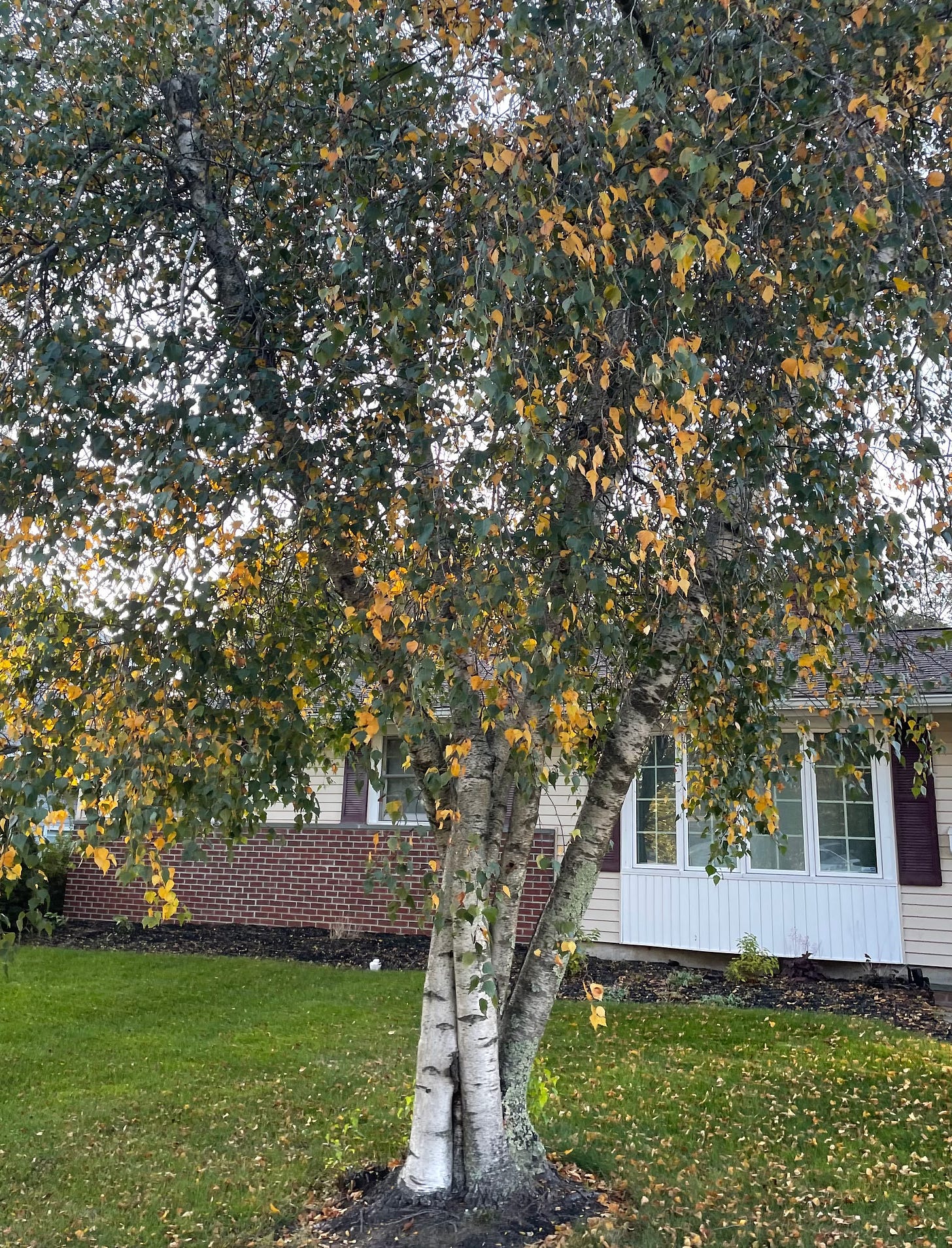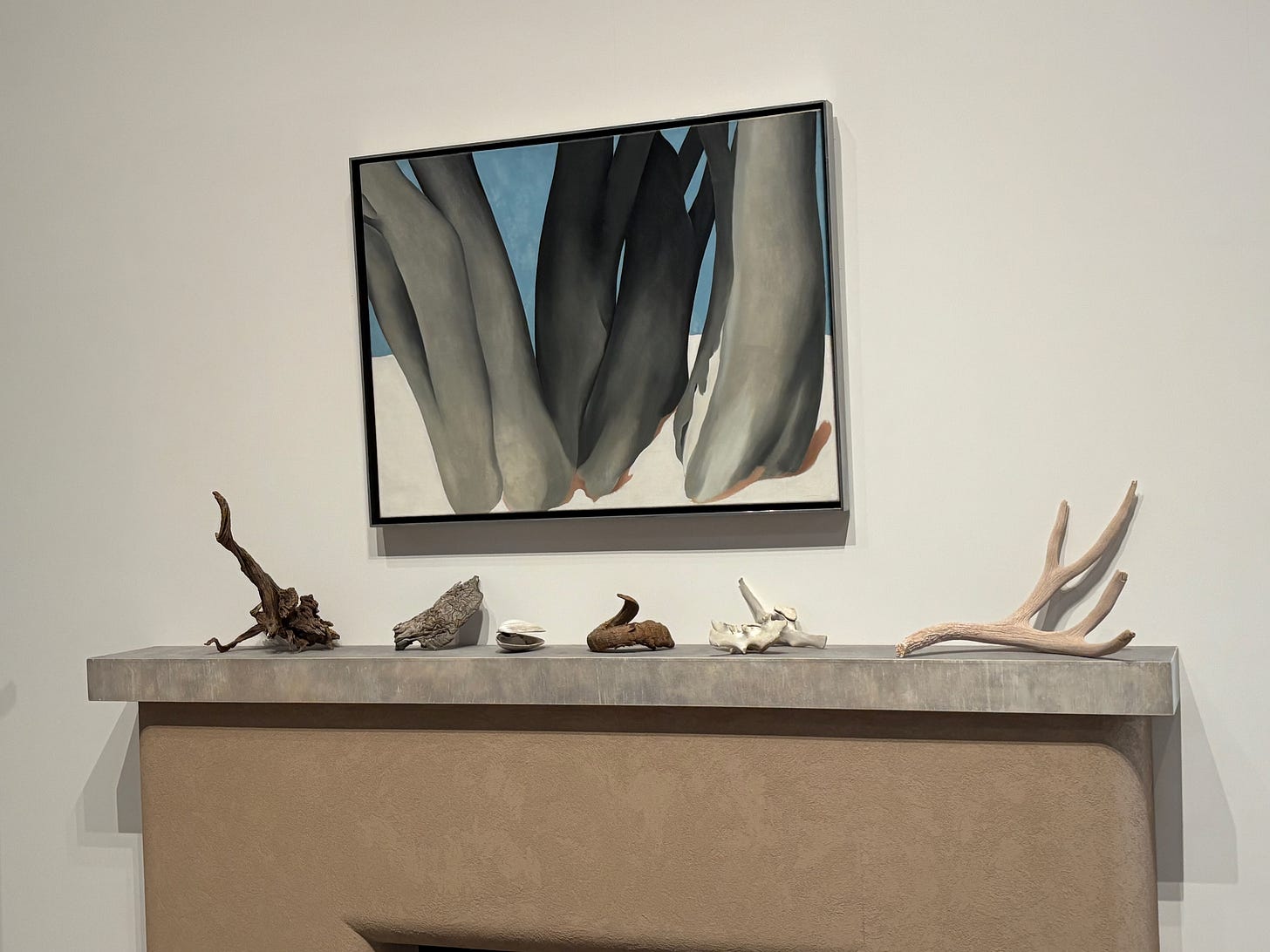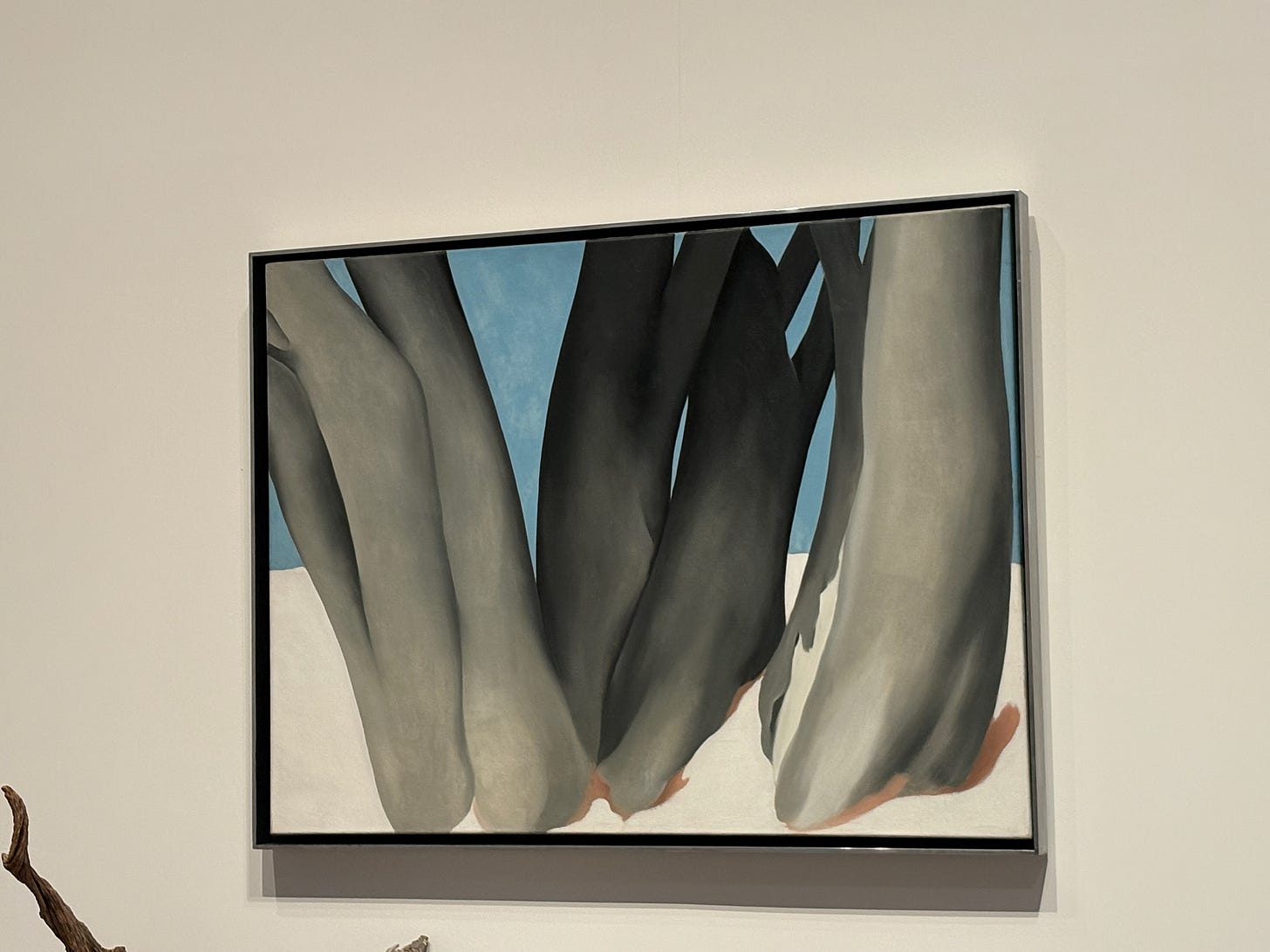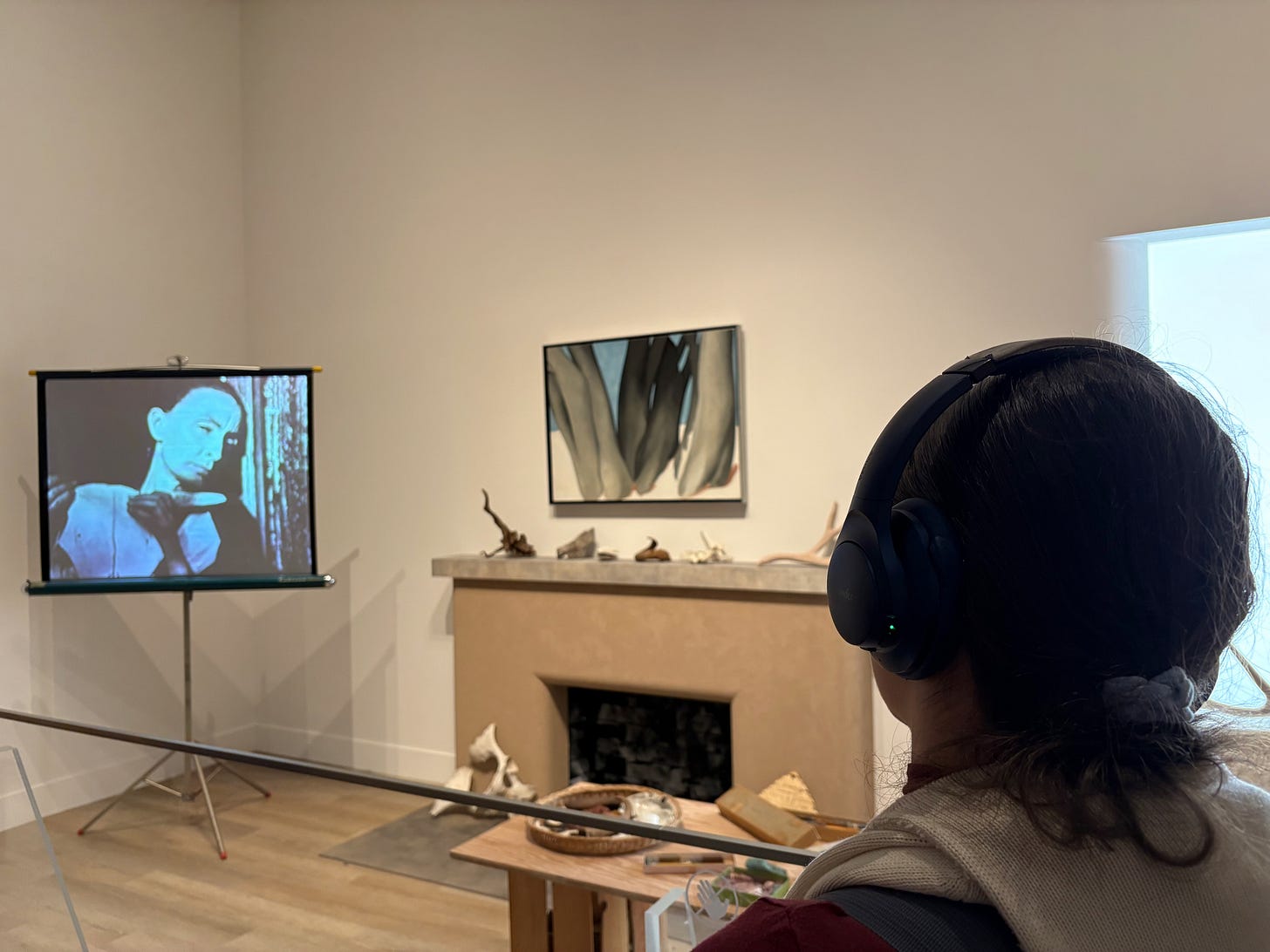
Gemel trees inosculate-- growing together so tight you can't tell is it one tree or two or three? Their slow, passionate embrace lasting years, unending dance. More and more indistinguishable one and the other-- their roots entangled their branches even the bark grown together. Will we grow old like the trees, like the wild geese who mate for life? Which of us will hold the other's hand when we breathe out the last breath? At the bottom of the well still water holds a lapful of stars-- so deep in my heart you are hidden that I cannot see the bottom.
*****
This poem grew out of a set of beautiful synchronicities.
First, a couple weeks ago I learned the words "gemel"— or twin— and "inosculation" from
’s note. I love learning new words to tuck into my word hoard and I thought: maybe I’ll use these in a poem. But I didn’t expect to find an occasion soon.Then I read this beautiful translation by
of "The Song of a Faithful Woman" by Meng Jiao. At first reading I was struck by the image of the still well: “My heart is the water in a well.” And then I was wrestling with the poetry of suicide, the idea that faithfulness of a wife is measured by her willingness to follow her husband into death.I wrote:
While I can't get on board with the idea of a widow killing herself because of the death of her husband, there is something in the idea that doesn't feel completely foreign either.
I have known many stories where an elderly husband and wife who have been married a long time die within a short time of each other-- as if living without the other just feels impossible.
My own in-laws died within a year of each other-- he in September and she in the following February. Even though they had been divorced for a long time, in their final years they reconciled somewhat; and while they didn't live together as husband and wife, they were good friends once again who often went to lunch together and spent the day together. Until mother-in-law could no longer drive. She seemed to fail so fast once she lost the freedom to drive herself and him around. Even though he had left her for another woman, she never remarried and always kept his name. For me she is a kind of icon of a different kind of faithfulness-- a faithfulness that never gives up hope, even when all hope seems to be gone. I think once she knew that he was gone, she was ready to go too.
But on second reading, I noticed the images of fidelity: the old trees leaning together and the mandarin ducks mating for life. And the trees reminded me of Ann’s trees growing together, inosculating, which comes from a Latin word for kiss— osculum.
But I was also haunted by the image of one of my favorite Georgia O’Keeffe paintings, which I saw a the Museum of Fine Arts last week: “Bare Tree Trunks with Snow,” in which it’s hard to tell exactly how many trees are clustered and growing together.
And in turn that painting comes to mind every time I walk through my neighborhood and see the group of birch trees that grow together in a dancing cluster. And those in turn make me think of the dancing trees in Narnia and I feel like Lucy, wanting to call on them to awake.
Anyway, I guess you could say my poem is a version of “Song of a Faithful Woman”. Though it started off being about the trees, in came the Canada geese I heard calling on New Year’s Eve, substituting for mandarin ducks, and then the well, though my well wanted to be filled with stars. (And the well also makes me think of Robert Frost and Seamus Heaney, but I’m not going to hunt down those poems right now.)
I am so grateful for all the inspiration I find on Substack where one poem leads to another as beauty chimes with beauty.







Oh my goodness, this is gorgeous, especially:
"At the bottom of the well
still water holds a lapful of stars--
so deep in my heart
you are hidden
that I cannot see the bottom."
I love the way you wove it all together Melanie—truly a beautiful reflection on faithfulness and love in slow motion. The O’Keefe painting is new to me. What a gift! Thanks so much for all this beauty.